The subtleties of the process of building brick houses
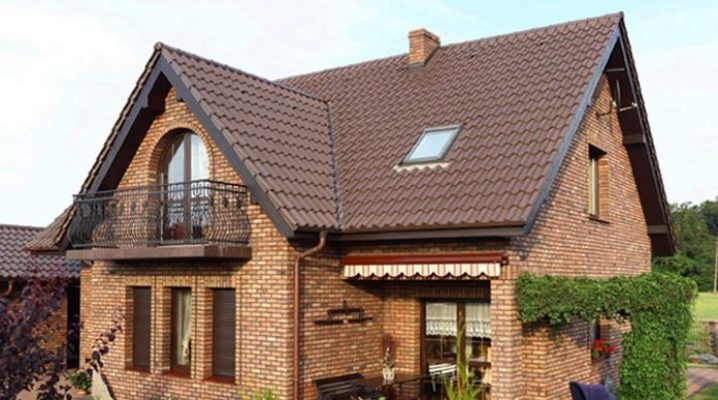
A brick house can serve its owners from 100 to 150 years. It is thanks to its strength and durability that this material enjoys an advantage in the construction market. A variety of colors and shapes will allow you to create various architectural works and turn a house into a palace.
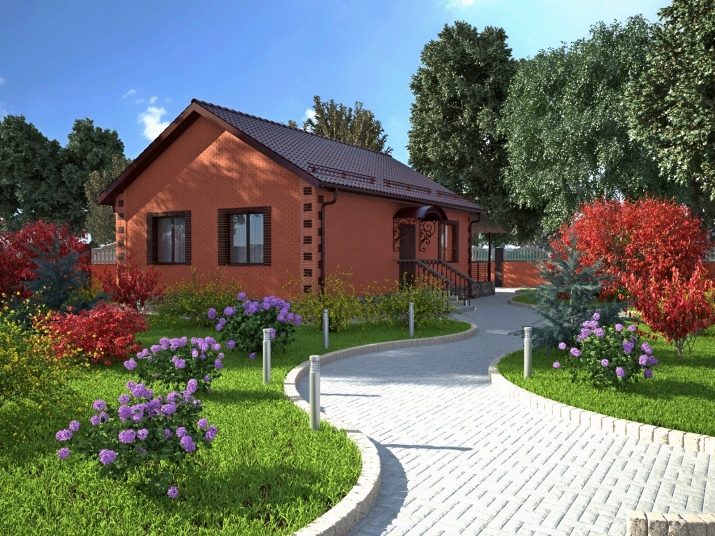
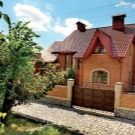
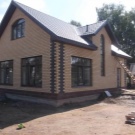
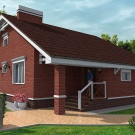
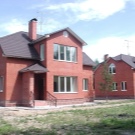
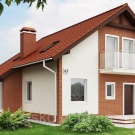
Peculiarities
Construction is a painstaking process that requires precision in execution. For brick houses, both the quality of the material and the laying process itself are important.
A brick house has its pros and cons:
- Energy efficiency. A brick house with walls of 40 centimeters without various thermal insulation materials is competitive with a wall made of wood of 1 meter. This indicator allows you to live in warmth in winter and not languish from the heat in summer. It also copes well with wind and blowing heat.
- Durability. The minimum period for even the lowest quality bricks is at least 50 years. This quality will save you from constant overhauls and replacement of elements, as is the case with wooden houses.
- Convenience. Small dimensions allow you to create complex structures - corners, arches, polygonal walls, loggias. Inside you can make a fireplace from the wall, a stove.
- Diversity. Brick pattern, color range, shape - all these qualities will make your building individual and not like the others.
- Hygroscopicity. Brick is a porous material. Along with its strength, it absorbs moisture, which leads to destruction. The solution to this problem is plastering with mortars with a high cement content.
- Low thermal conductivity. This quality can be a plus in a house with constant heating. But if this is a summer cottage and you are not there all the time, then you should expect high humidity, and, as a result, mold. It will not be possible to warm up such a house quickly - it will take a couple of days for the structure to begin to store heat and slowly cool down.
- Severity. Brick is a heavy material compared to its counterparts, for example, aerated concrete. Therefore, a massive and deep foundation is required for it. However, there is a salvation here too - silicate brick with a relatively low weight.
- A large amount of plaster for external finishing of the facade, if brickwork or, for example, siding is not provided.
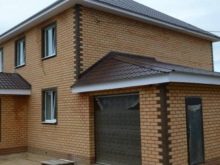


At the moment, the construction market offers two types of bricks for construction:
- Silicate. Lightweight material with large dimensions, which is important when calculating the load on the foundation. Low thermal conductivity. It is easy to install, and due to its size, it is also done quickly. It's easy to cut. No special fixtures or tools are required during installation. It is important that such a brick has a reasonable price.
- Ceramic. Thick and sturdy. It has a beautiful appearance, therefore it is often used in cladding and does not need additional plastering. Hollow bricks have low thermal conductivity. In turn, ceramic bricks are also subdivided into building and facing. The cladding version has a beautiful structure, because it serves as a decoration and "clean copy" of your home. The price of ceramic bricks is, of course, higher.
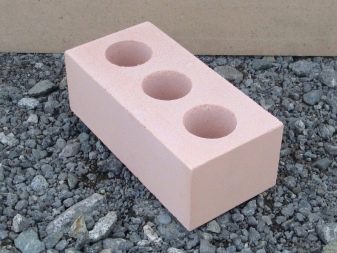
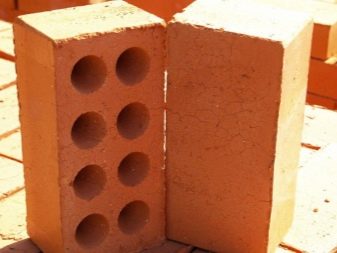
Of the two, silicate is acceptable. With little cost and little time, even a beginner is able to build the walls of a house. Ideally, it is better to combine two types - make the walls silicate, but make the facing with ceramic bricks.However, the cladding material is diverse today, so the facing brick has a lot of competitors.
This specific division is conditional, since building materials today have a wide variety for every wallet and taste. To satisfy your desires, you need to explore all the options offered.
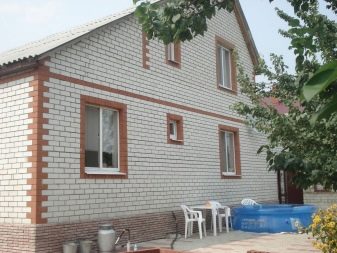
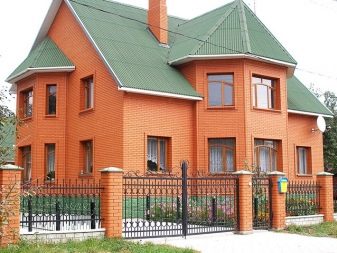
Projects
The most important stage, on which the entire construction of the house and its location depends, is, of course, drawing up a plan. SNiP (building codes and rules) solves a lot in this.
Professionals and everyone who has come across the construction of brick houses advise using a project that was developed by people who know the intricacies of the process. This will facilitate the construction process with a minimum of possible errors, and everything related to registration and registration by cadastral services. This does not mean that you cannot use your plan. You just need to be as careful as possible here. Then you will have a home that best suits your requirements.
It is necessary to take into account the layout of the entire territory, because the economy does not end with one house.
The location of the house relative to the neighbor's house should be taken into account., and not borders, which for brick houses are at least 6 meters. But the house should be 3 meters from the neighboring border, but if the neighbors have no complaints, then the house may be closer. The house should be at least 5 meters from the red line (a conventional line between your site and the roadway). You should not neglect the rules, otherwise you will face a fine or even demolition and the requirement to move the building.
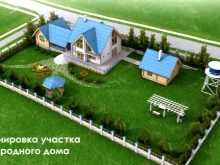
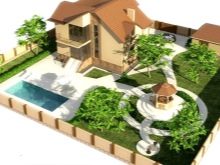
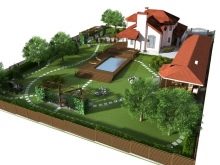
The plan of a private house takes into account all walls, windows, openings, wooden floors. The standard for construction is sand-lime brick with dimensions of 250x120x65 mm. It is under it that the thickness of the walls is oriented. In a house with permanent residence, the wall thickness should be at least one and a half bricks. The ideal, but very expensive option is 2.5. For country houses where living is not regular and does not provide for a winter stay, the wall thickness can be one brick.
It is necessary to determine the load-bearing wall (should go across the entire building), and designate it in the plan, decide on the floors and perform the layout of each. House sizes vary. For a one-story house, the optimal dimensions are 8 by 10 m, which will accommodate all the necessary rooms. A two- or three-storey house can be smaller and benefit from the height - 8 by 8 m.

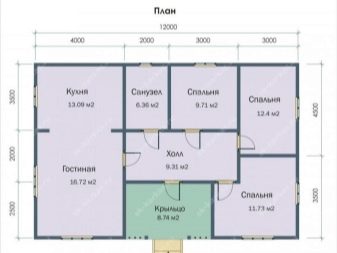
Materials (edit)
To build a brick house, the following materials are required:
- the material of the intended sheathing;
- cement - grade M-400 is suitable for construction;
- river sand;
- slaked lime;
- crushed stone or gravel;
- board, plywood;
- thermal insulation materials;
- fittings;
- wooden floors;
- roofing material or waterproofing;
- plasticizer to increase the elasticity and plasticity of the solution.
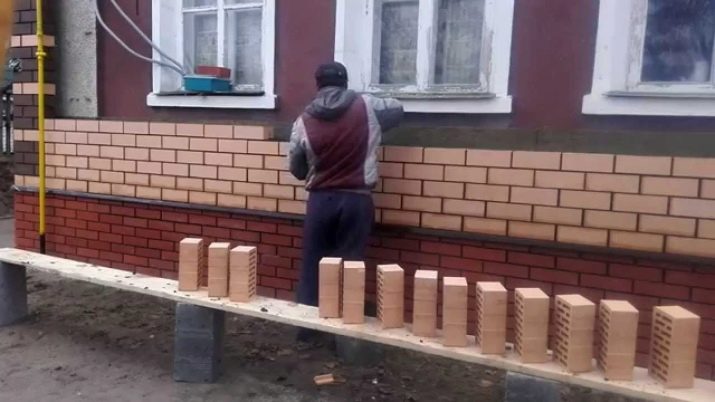
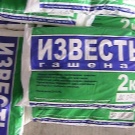
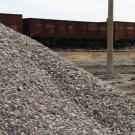

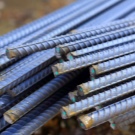
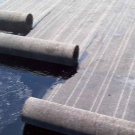
Preparatory work
The first thing to do is to prepare the surface, level the area, remove all unnecessary, debris, bushes. Next, the marking of the site for the foundation begins. It takes place in view of the outer walls of the house. Then, according to the markings, you can start digging trenches.
Then we select the type of foundation and masonry.
Foundation type:
- Ribbon (most popular). Trenches are lined with bricks or planks and poured in a strip pattern. Installed under load-bearing walls. Concrete consumption in this case is average.
- Plate. For him, pits are dug and the foundation is poured in the form of a slab. Such a foundation is suitable for heavy houses. But with this design, a lot of concrete is needed.
- Columnar. The support for the house is monolithic pillars that are poured and connected with translations. Minus - strong shrinkage.
- Pile. Drill holes are made and piles are installed. Such a complex design will require a special technique.
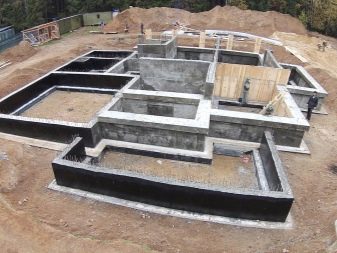
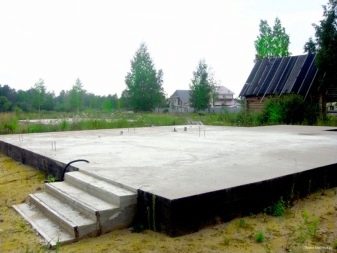
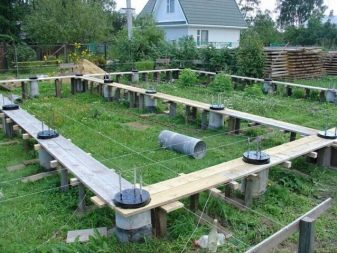
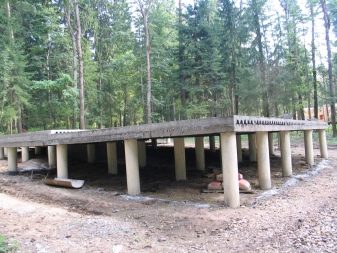
The higher the house, the deeper the trenches should be. For two- or three-story houses, this figure should be at least 1.5 meters.
The masonry of the walls can also be different:
- Standard - 4 bricks.
- With a metal mesh. It serves as an additional material for tying rows. For the required rigidity, it is laid in 5-7 rows.
- Well. Masonry to increase thermal insulation. Gaps are left inside the masonry, which are filled with a certain material - expanded clay, foam, cement. Not only thermal insulation is increasing, but it is also possible to save on brick.
- Lightweight. With such masonry, a contour is built in the form of one brick on the outer wall and one inside. The gap between them is filled with a solution.
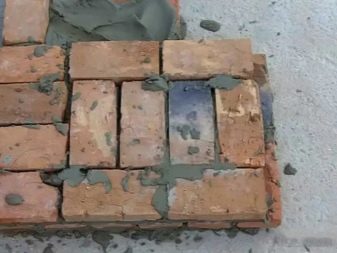
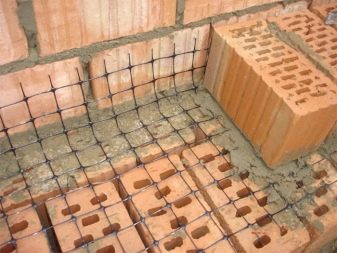
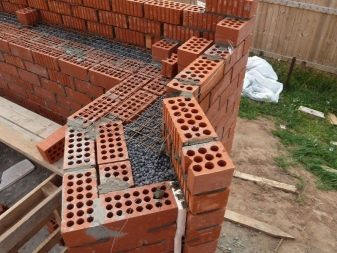
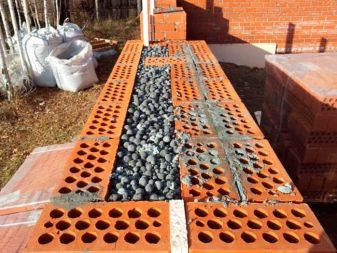
At this stage, the calculation of the number of bricks is also going on. To do this, we calculate the area of the bearing walls (the perimeter must be multiplied by the height). Next, you need to subtract the area of the openings. Then calculate how many bricks you need for 1 square meter of wall, taking into account the type of masonry selected. We multiply this figure by the figure obtained from the bearing walls. Add 5-10 percent to the resulting figure for fit or waste.
Before construction, get a mixer for mixing concrete, containers for mixing it, shovels, trowels, level, cord, plumb line, saw, grinder, jointing. All this will allow you to quickly and correctly build the walls of the future home.

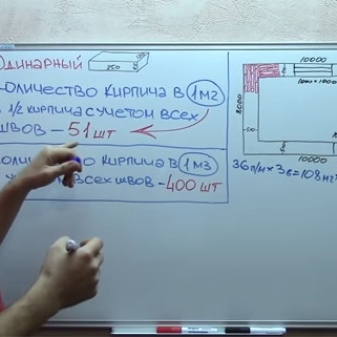
How to build with your own hands?
After choosing the type of foundation and masonry, you can start building the house.
When installing the foundation, crushed stone (~ 5 cm) is first poured onto the bottom of the trenches. This will make the structure more durable. Then the reinforcement for the bundle is installed. To save money, you can use just metal elements, corners, profile, wire - everything that will help to tie the foundation and make it stronger. It remains to pour and leave it to dry. The minimum time for standing is 1 month. Some leave the foundation to harden for a year and start work the next year.
The finished coating is covered with roofing material. In order for the foundation to serve you for many years and the house does not give cracks and deformations, it is important to waterproof the foundation with a special film or composition.
This will protect against moisture, and thawed and ground spring waters will not get into the basement of the house. When installing the foundation, take into account the depth of the basement, the sewerage system, the location of the toilet and bathroom. For quick access to the basement in the basement, a door can be made.
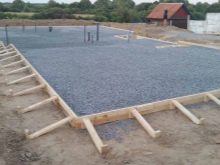
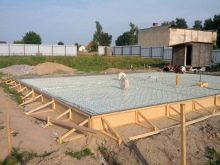

The next stage is the construction of the walls. The cement mortar must be mixed well for greater bonding ability and to avoid subsequent shedding. The amount of solution should not exceed the speed of the master, otherwise it will simply solidify and you will lose material.
Laying starts from the corner. The solution should fill the entire space (approx. 1.2 - 1.5 cm wide). Each brick is tapped in order to avoid excess air in the seams, and, as a result, rapid destruction. Excess mortar can be removed with a trowel. It is good if the last brick in the row is whole or half. But if this did not happen and there was a gap, then a larger amount of mortar or a piece of brick would help. If you are working with facing bricks, then after finishing, you need to do the joining from the outside - cleaning the excess mortar and leveling the seam. If this is an inner wall, then you need to leave a small distance between the seams for further filling with mortar from adjacent bricks.
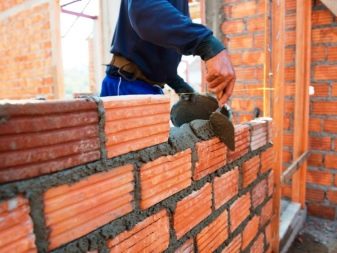
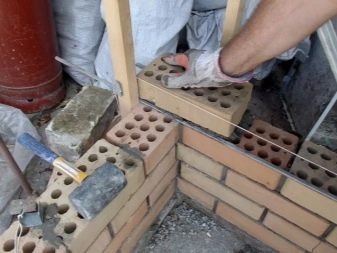
Thus, rows are lined up to various openings - door, window. Here you need to take into account that the length of a row with an opening can change from ending with one brick to using only a part. You can easily cut it with a grinder. These are voids, the height of which is closed by an armature - a lintel. Its width should correspond to the thickness of the walls. The length should, of course, be more than the opening by 20-30 cm, and be fixed on the rows. Further work continues as usual. Then comes the construction of the inner walls. Their laying should go from the bearing walls if brick walls are meant in the house.
The next stage is the installation of ceilings (anchoring) - interfloor, roofing, attic. In the role of the floor, there can be a slab, wooden beams. They must be embedded in walls. Anchoring assumes full interconnection of all structural elements of the house and avoids deformations and "walking" of the building.
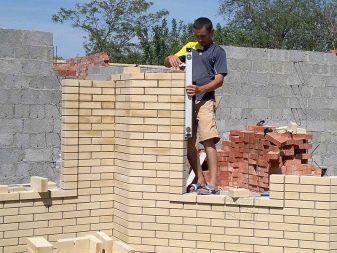
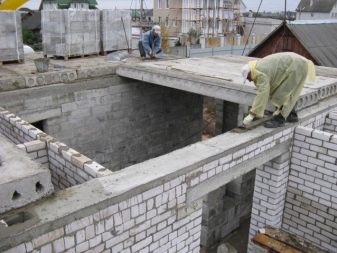
The technology of the roof device includes rafters - wooden beams, lathing - on which the roofing material, waterproofing, covering, a snow retention system, and thermal insulation will be installed.
Attic walls can be made of bricks or other materials to save money. This also applies to the walls of the house - facing bricks, siding, block houses, plaster and similar materials.
It is important to build the floor for further movement inside. For a start, it can be a rough floor on logs from a rough board. If you don't want to spend extra money, then you can lay the boards directly on the ground. Then you will need to stock up on a ladder.
If these stages are passed, then the main part of the load on building a house is over. Now you can safely start the interior arrangement, the installation of doors and windows. The construction of the house also includes the installation of communications - heating, ventilation, electrical wiring.
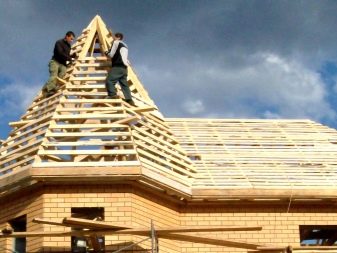
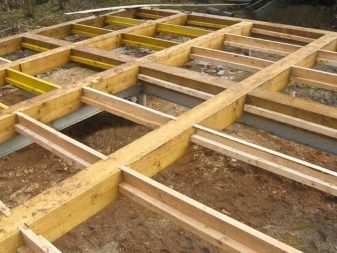
Tips & Tricks
- Get familiar with the area. It is important to study the depth of groundwater, the level of waterlogging. After all, these factors will determine whether your house will "play", whether the foundation will undergo deformation.
- Documentation. Construction can begin only with a complete set of all permits, project and plan.
- Foundation waterproofing. It is better to do it twice - between the foundation and the basement and between the basement and future walls. Do not save, thereby ensuring the durability of the building.
- It is better to mark the foundation using a rope or dense thread - this is a guarantee of accuracy.
- Provide the protruding part of the foundation with supports when pouring, otherwise its base will be less than the spreading top, which can completely break the boards with its weight.
- The most suitable type of foundation for our climate and relief is tape. If the house is planned for several floors and a large area, you need to make a deep foundation. Please note that you need to think over the course of communications so as not to destroy it later.
- Quality. The better the material, the longer the building will last. Choose smooth bricks without cracks or chips, with clear corner lines and even color. Consider the strength, which is indicated on each brand of brick. An M50, for example, can withstand 50 seasons of freeze and thaw, respectively.
- For more warmth, use insulating materials in the masonry. Although it is possible to make thermal insulation from the inside of the walls.
- Remove excess solution immediately, otherwise it will harden and a "grimy" and sloppy house will appear in front of you. After hardening, it will be difficult to get rid of this daub.
- To keep the walls straight, brick to brick, pull rope or string from one corner to the other.
- After raising the walls, a break of about six months is required. During this time, the walls will settle and firmly set in place. To avoid excess moisture, cover the last row of bricks with roofing material or foil.
- If the site is not electrified, purchase a generator.
- The brick pediment of the future roof is installed before the installation of the rafters. To prevent it from curving and being resistant to the wind, additional support is needed in the form of transverse masonry or pilasters.
- To keep the adjacent wall firmly, make a bundle every 2-3 rows. To prevent the wall from moving, make a depression in the brick with a grinder to match the height of the connecting element.
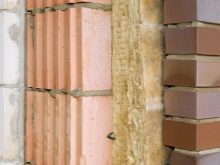
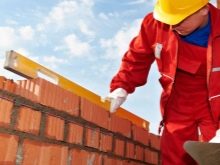

Beautiful examples
Classic red brick always looks great. He looks dignified and laconic. And if the texture of the brick has a decoration, then the house will become a decoration of your site. The combination of textures, additional cladding with decorative bricks also looks cute.
Houses with colored bricks - blue, turquoise, brown, orange - look interesting. Fresh and interesting.
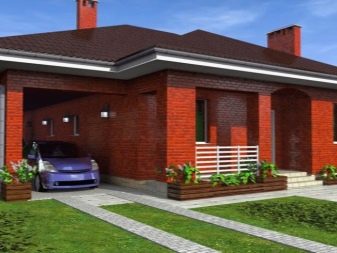
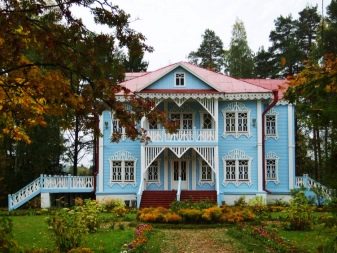
Two-story houses can be made small, but high enough. You can also take the attic.
The highlight of your home will be a non-standard shape - ledges, polygons, rounded corners.


Another striking option is playing with color. The combination of different colors refreshes the appearance of the house and attracts attention.
Glazed houses look beautiful. For the climate of our country, this would seem to be a strange decision. However, today, building materials can quite adequately retain heat and give a large amount of light to the house.
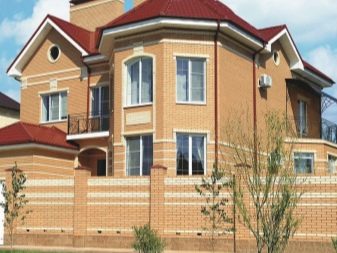
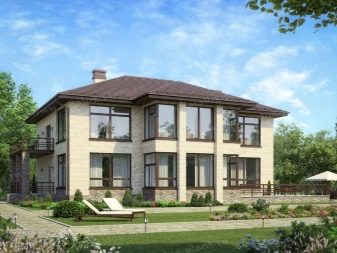
The balcony in the house will become a cozy place for summer holidays. You can breathe fresh air, admire the sunset.
Brick house - reliability and durability. These qualities are worth all the installation costs. Ease of installation attracts and allows even a beginner to cope with this task. Such a house will gather the whole family and will serve more than one generation.
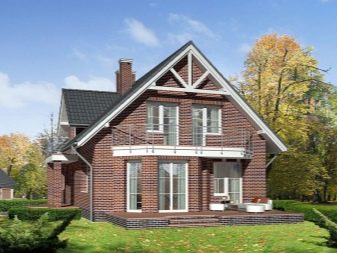

Tips for building a brick house - in the next video.













The comment was sent successfully.